Leaving No One Behind: Community Perspectives Bring Voice and Inclusion to UNDP-KOICA Karamoja Feasibility Mission
June 30, 2023
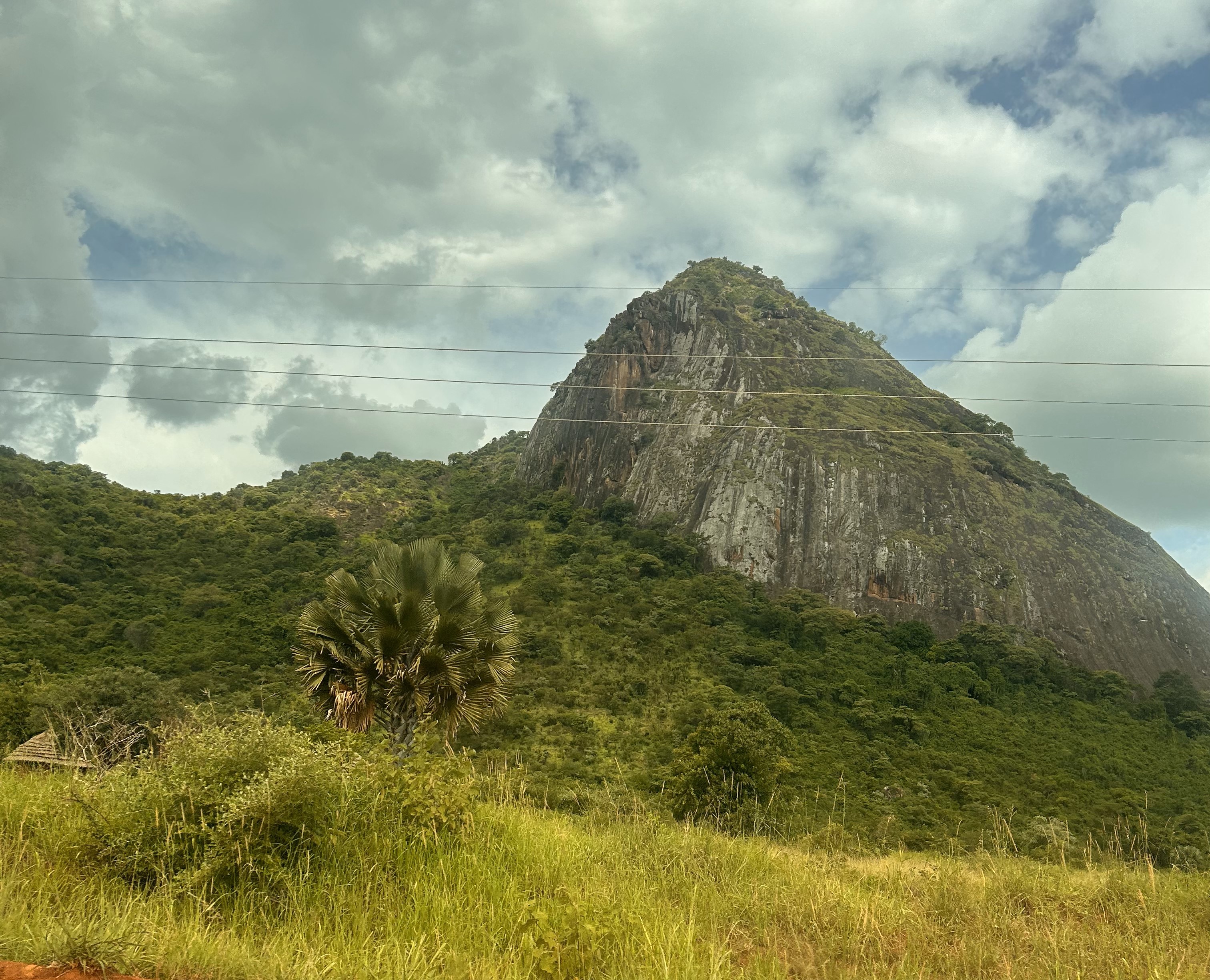
The undulating hills of Karamoja are one of the sub-region’s many attractions.
Leaving no one behind is perhaps not a new concept to pastoralist communities in Africa. Throughout history, they have been known to apply indigenous knowledge to seek fresh pastures and drinkable water for their family and livestock, navigate animal and human diseases outbreaks, and enable regeneration of land resources. A whole settlement, would break down their homes, carry salvageable material and rebuild in favourable areas.
Today, leaving no one behind strengthens solidarity against many threats that affect society. It is about establishing factors that cause vulnerabilities. It is about working together with the communities to design sustainable solutions to the complex challenges.
Our five-day visit through Kaabong, Kotido and Moroto Districts in Karamoja sub-region enabled the engagement with communities and sought their perspectives on solutions to problems undermining their community resilience.
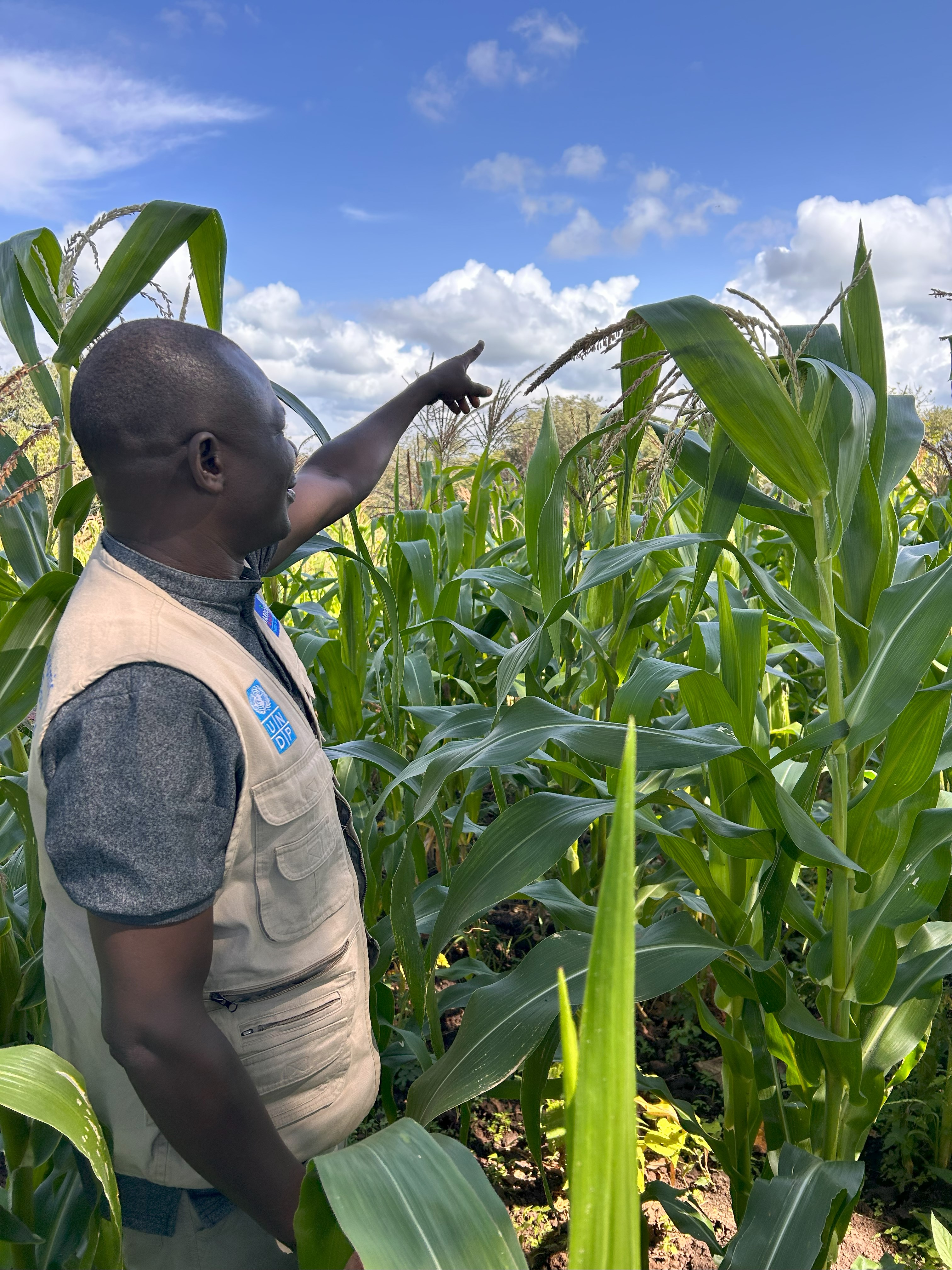
Endowed with fertile soil. Flourishing maize garden in Timu sub-county, Kaabong district
Who are the vulnerable and where are they?
During the field visit, UNDP accompanied the KOICA Uganda office on a feasibility study in three of the nine districts of Karamoja sub-region, which have been classified by the Integrated Food Security Classification Phase (IPC) report of February – June 2023 as having critical challenges with food security. For long, these districts have been plagued by insecurity and intercommunal violence, resulting from livestock management, with spill-over effects extending to the border with Kenya.
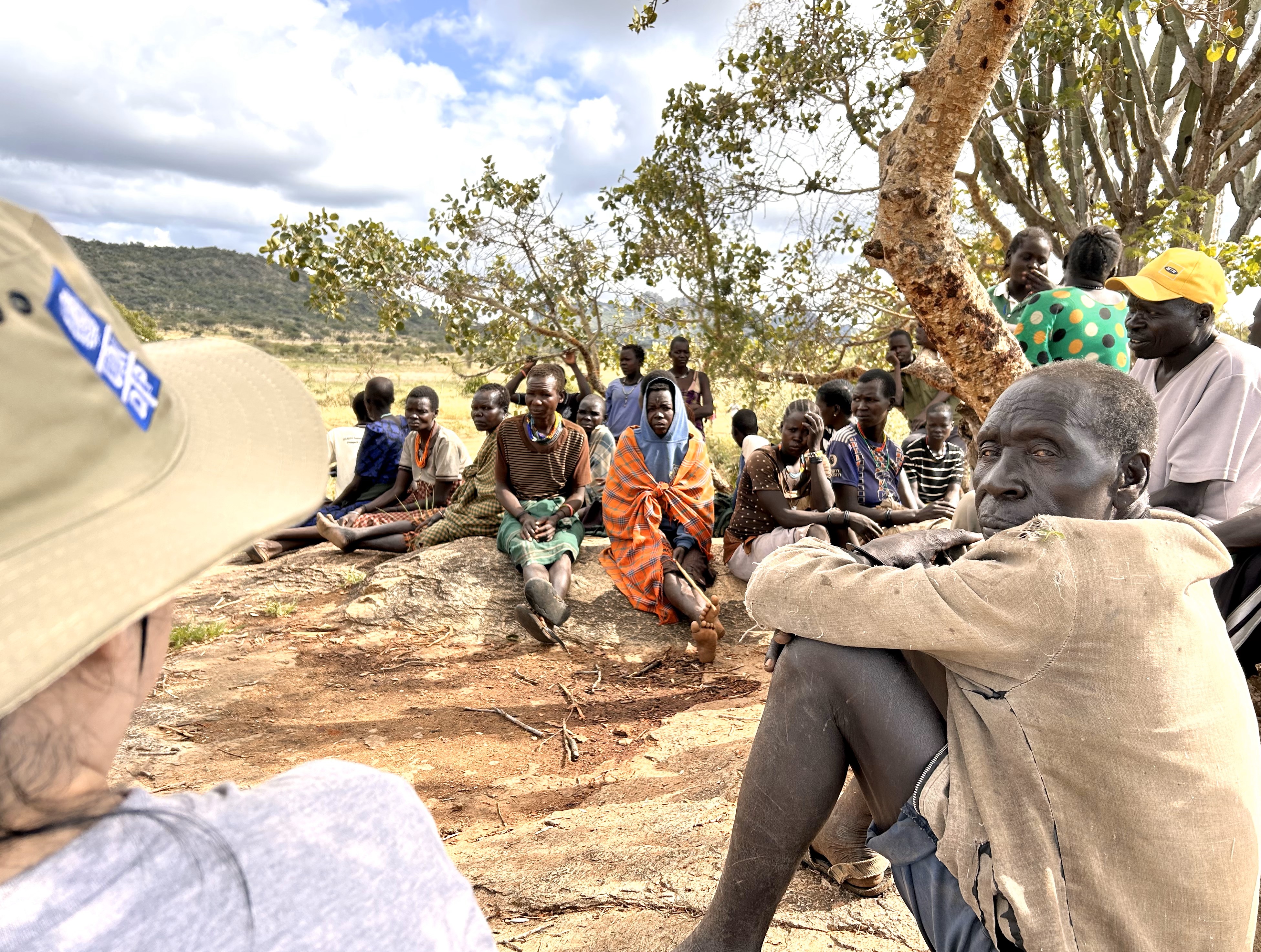
Community members assemble at a local point to share the localized issues at Loyoro sub-county, Kaabong district
“Bringing us together in dialogues, the Jie, Turkana, Matheniko, and Dodoth will be important in assuring peace. This will be a foundation for community healing and development,” a woman community leader from Loyoro sub-county, Kaabong district, said.
While travelling, one could not stop to amaze at the effect the rains had on the environment. We witnessed lush rangelands, emerging maize and sorghum crops and general greenery, masking the harshness of the environment, which had in the last 12 months caused the death of several community members across the sub-region, as a result of food scarcity. In Rengen, Nakapelimoru, Loyoro, Timu, Rupa, Lotisan and Nadunget sub-counties, we heard from women and men, how raids on livestock, and responses from security institutions had fueled community tensions which disrupted access to basic services and livelihood activities.
“Our kraal is very far, where animals are kept for protection. This inhibits us from benefiting from nutritional products from our animals, which affects our children and women’s health. This is all because of the insecurity issue,” a female peace committee member from Rupa sub-county, Moroto district said.
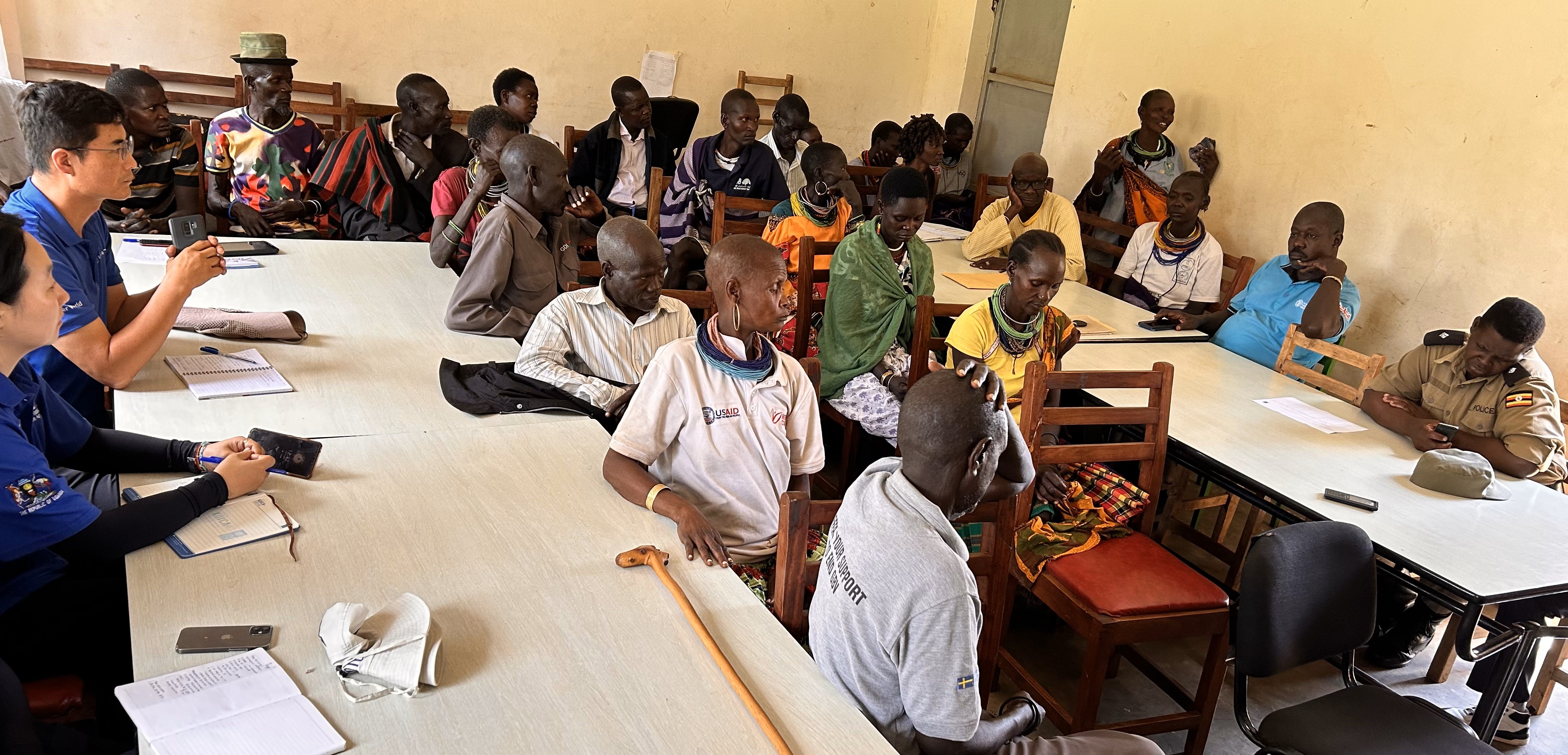
Peace committee members in search of lasting peace in Moroto
What is the effect on the community character?
While covering the long distances between communities, taking us to the edge of Uganda’s border with Kenya at Timu sub-county, we witnessed a very active community with people out in the fields, tending to land which had variable crop sizes. From flowering maize plants, waist-high sorghum plants to, knee-high plants hit by the scorching sun in some locations.
One witnesses the difference in the timing for planting, occasioned by rainfall variability. Even elders can no longer accurately advise on when the rains will come. But the community’s resolve to positively disrupt their food insecurity situation is very clear.
“The rehabilitation of former warriors needs to be sustainable. It is an important part of the bigger peace agenda. Skilling them and providing materials for establishing livelihoods needs to be followed up in the communities of their reintegration, for longer term benefits. These youth also need to be assisted with psychosocial support,” the speaker of Rengen sub-county, Kotido district said.
In the sub-region, many have lost their lives during cattle raids, women have been widowed, and children have been orphaned, and in some communities, agriculture is adversely affected as communities cannot till their land with oxen since they have been lost to raids. In what constitutes a threat to livelihoods, some communities have taken joint decisions to do away with livestock as a way of preventing raids into their villages.
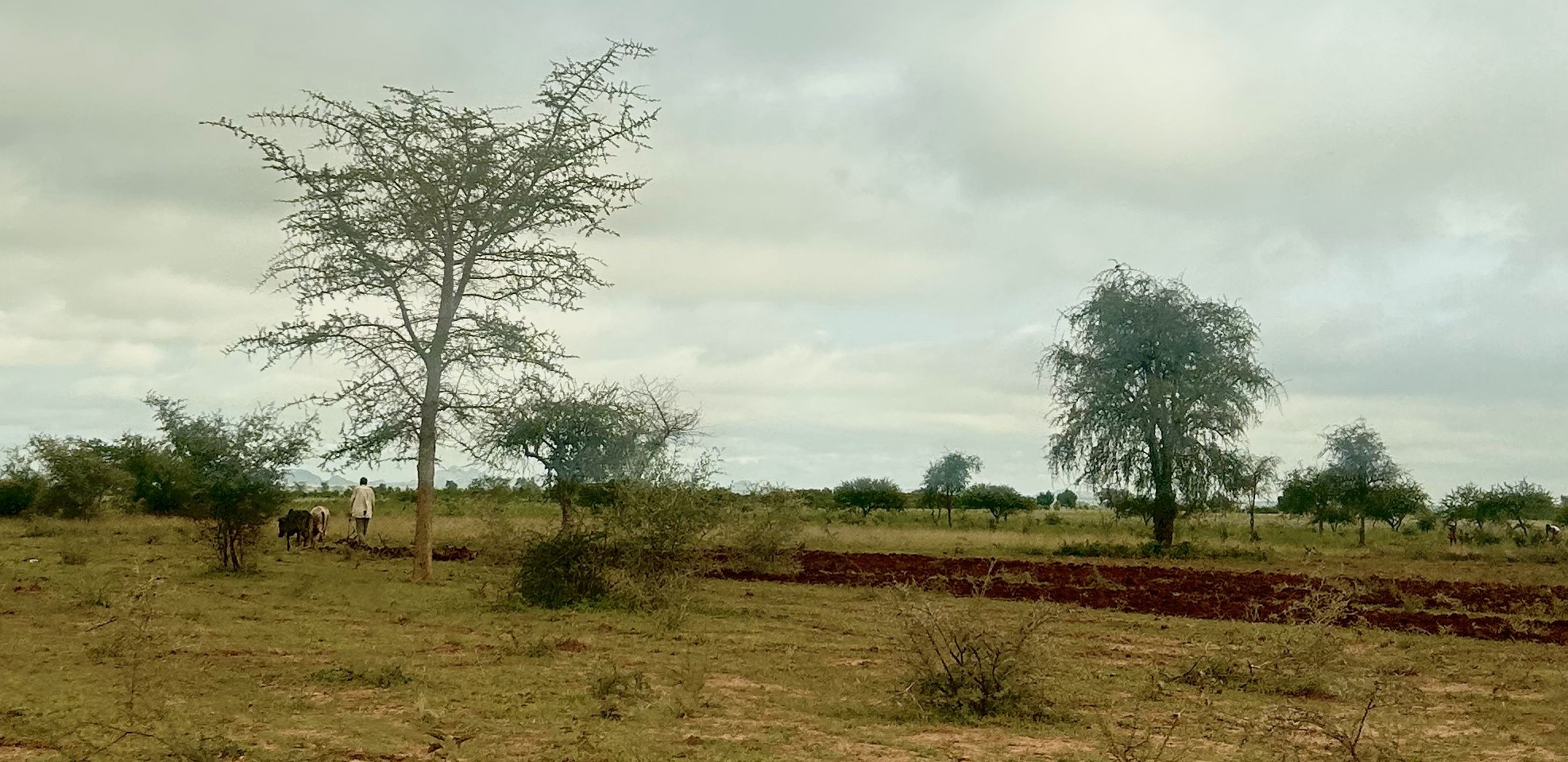
Land preparation for fresh planting in Rengen sub-county, Kotido district
Localised actions and the space for transformation
District and sub-county government actors recognize the need to address the underlying threats. There is recognition that peace fosters development and that investing in human capital development is also part of the longer-term peace proccess.
“Relative peace has brought us even the permanent houses you see now. Many people came back to the community and are happy. But we are seeing changes, we have lost all our animals and the weather is affecting our ability to produce food,” a Loyoro sub-county official, Kaabong district said.
As outlined in the UNDP prevention offer, the journey through Karamoja revealed important community insights, defined localized challenges, and presented a menu of remedial actions. It presented better information on who is affected, where they are, and the kinds of partnerships that need to come together for integrated action, including under the proposed UNDP and KOICA partnership in Karamoja.
By David Maina, Humanitarian Development and Peace Nexus Specialist

 Locations
Locations